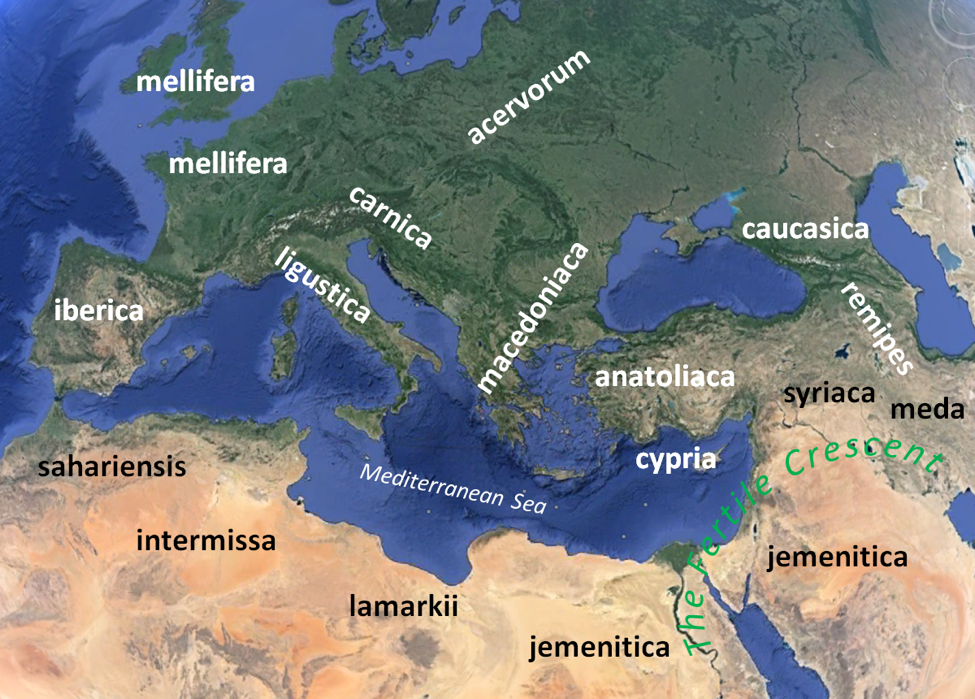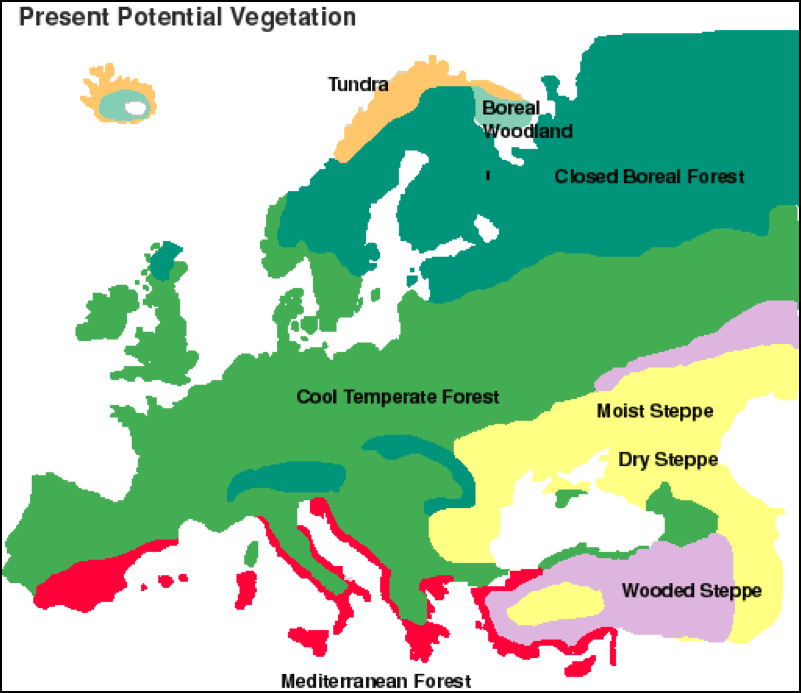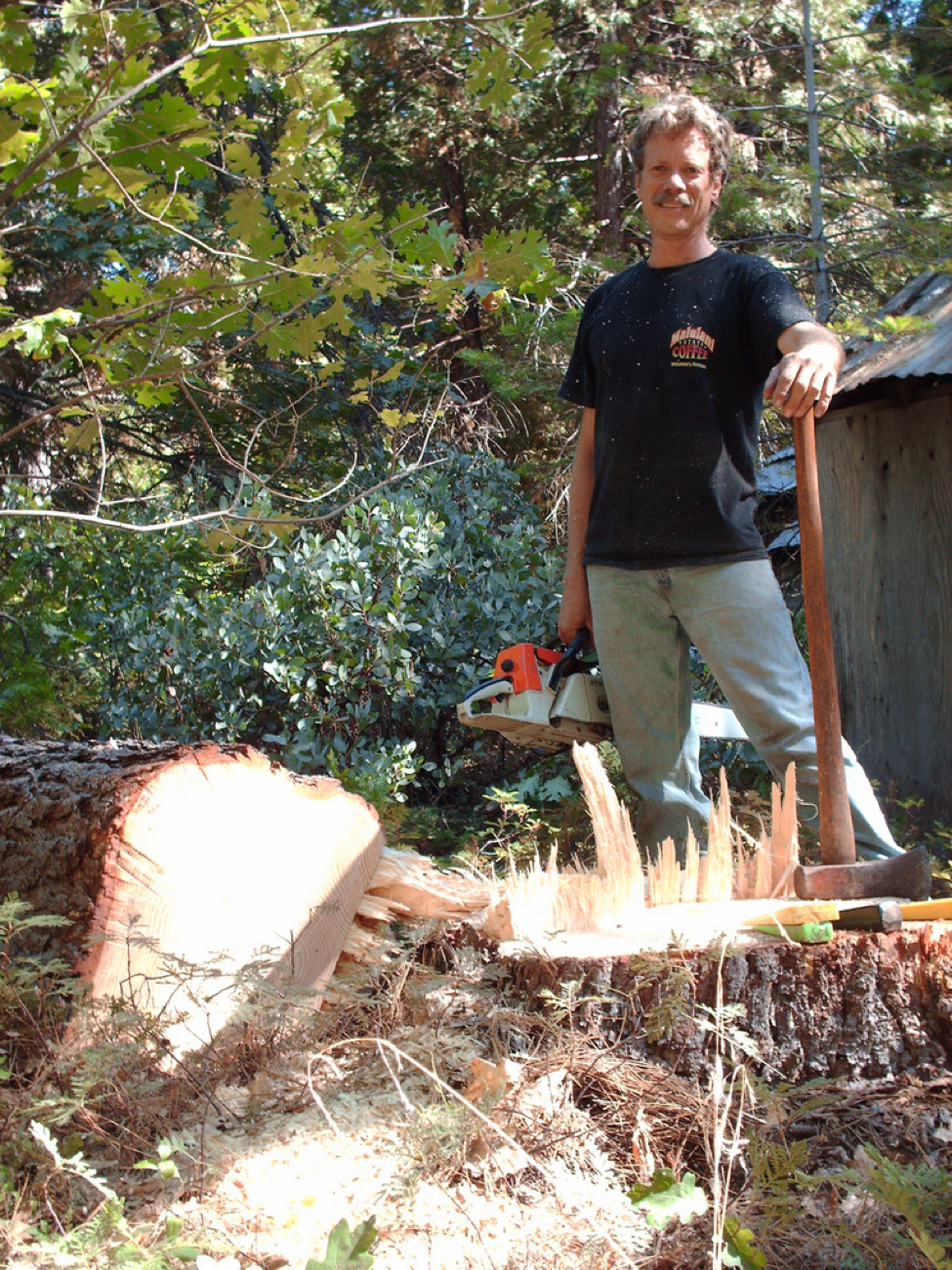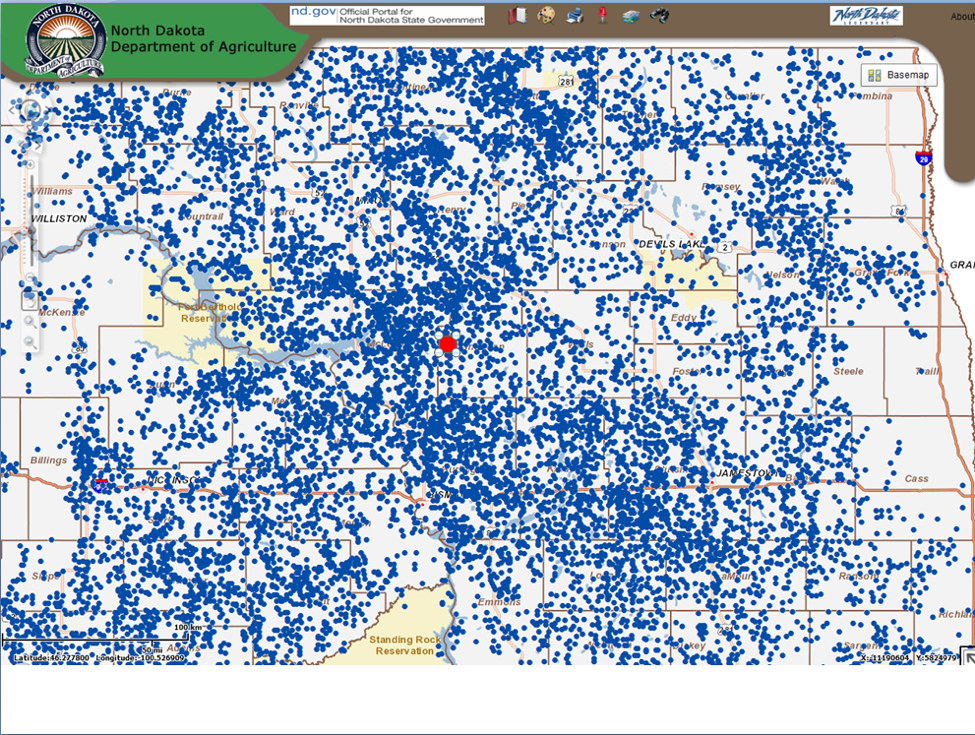What’s Happening To The Bees? – Part 3
CONTENTS
Setting The Stage: The Origins Of The Players
Early Changes in The Honey Bee Niche Due To Humans
The Human Deforestation Of Europe
Adaptation And Change In Business
The Creation Of A Niche For Bee-keeping
The Domestication Of The Honey Bee
What’s Happening to the Bees?
Part 3
Originally published in ABJ April 2014
Randy Oliver
ScientificBeekeeping.com
In the last installment of this article I explored the limiting factors of the honey bee realized niche prior to the influence of humans. So let’s now look at how the populating of Europe by modern humans affected the honey bee.
Setting The Stage: The Origins Of The Players
Let’s first set the stage. The time frame of interest runs from about 10,000 years ago through about 400 years ago. This period spans the time from the last “ice age” (technically, the glacial period; during which it was too cold for bees to inhabit the area), covers the invasion and colonization of the warming continent by both bees and modern humans, and ends with when humans started transporting the honey bee across oceans.
Apis mellifera
The honey bee evolved long prior to the time frame of interest. Recent research [1] suggests that the genus Apis originally developed in Europe, and then spread into Asia (where it evolved into several different species), into North America (where it later went extinct), and into Africa (via Spain/Morocco). It was in Africa that the species Apis mellifera evolved, and then later migrated back into Europe and the Middle East, branching in various ecological habitats (realized niches) into locally-adapted subspecies.
Then came a prolonged Ice Age, during which there were periods of cold and dry glaciation interspersed by periods of warming (as we are currently enjoying). During the cold periods, ice covered northern Europe, and honey bees were forced to follow suitable habitat southward, retreating into warmer “refugia.” During the warm (and wetter) periods, ice retreated and Europe could temporarily revegetate, allowing honey bees to expand their ranges back again northward. The current races of bees in Europe recolonized the region from such refugia as the climate warmed about 10,000 years ago [2]. I’ve shown the distribution of the named races (subspecies) of Apis mellifera in the map below (Fig. 1). The satellite image shows the differences in climate and vegetation in the various regions. Of note is that the first “keeping” of bees appears to have begun in the Fertile Crescent of the Middle East with A. m. jemenitica and syriaca.
Figure 1. Subspecies of Apis mellifera in Europe and the Mediterranean region. Our domesticated stocks in the U.S. primarily derive from the temperate-adapted ligustica (Italian), carnica (Carniolan), and perhaps caucasica. The feral population of bees in the U.S. also contains the mellifera (German dark) lineage [[i]]. Map by the author; satellite image from Google Earth; subspecies distribution from various sources [[ii]].
[i] Delaney, D (2008) Genetic characterization of U.S. honey bee populations. PhD Thesis http://www.dissertations.wsu.edu/Dissertations/Summer2008/d_delaney_070108.pdf
[ii] The classification of these races is rather arbitrary, and under debate by taxonomists, but gives a general idea. There are also discrete breeding populations within each of the subspecies. See:
Radloff, SE, and HR Hepburn (1998) The matter of sampling distance and confidence levels in the subspecific classification of honeybees, Apis mellifera L. Apidologie 29: 491-501. Open access.
Al-Ghamdi, AA, et al (2013) Geographical distribution and population variation of Apis mellifera jemenitica Ruttner. Journal of Apicultural Research 52(3): 124-133. Open access.
Practical application: each subspecies of honey bee is adapted to a specific habitat and climate. The “best” bee for any region is that which has already undergone countless generations of adaptation. Although the Italian bee is very popular among many beekeepers, it is certainly not the best adapted bee for non Mediterranean [5] conditions.
Homo sapiens
At the end of the last glacial period, modern humans also moved up into Europe from Africa, displacing the cold-adapted Neanderthals (as did the bees, modern humans also evolved into different races in the region). These hunter-gatherer human populations were at first not dense enough to exert an appreciable impact on the honey bee. This changed with the advent of pastoralism and agriculture—initially slash and burn, then later improved by the invention of the plow. The adoption of agricultural practices facilitated the niche of Homo sapiens—by greatly increasing the carrying capacity of the habitat (mainly by the farming of grain)–thus allowing the human population to begin its exponential growth (to be later limited by epidemics of infectious diseases).
Practical application: as we shall see, the factors of migration, locally-adapted races, displacement of existing populations, the farming of grain, and epidemics of infectious diseases will greatly affect the honey bee over the ensuing years.
Early Changes In The Honey Bee Niche Due To Humans
O.K., now that I’ve set the stage, let’s take a look at how the early expansion of humanity into the native range of the honey bee affected the limiting factors of the bee’s niche (I will cover more recent impacts later). Allow me to address each of the limiting factors that I’ve previously covered, in turn.
Limiting factor: The weather
Weather is the day-to-day expression of climate. For hundreds of thousands of years, the climate of Europe oscillated between periods of cold/dry and warmer/wetter, which of course greatly affected the local weather. The fundamental niche of the honey bee is limited by cold and prolonged winters, by extreme summer heat, and by lack of water and nectar-producing plants (especially forbs—herbaceous flowering plants other than grasses). For thousands of years at a time, parts of Europe simply did not provide conditions that met the requirements of the bees’ fundamental niche, causing the extirpation of local populations or entire species. Keep in mind that any species has “edges” to its range, past which the species is stressed, or cannot successfully live. Slight changes in weather at the edges can temporarily make that habitat unsuitable for bee survival.
Practical application: for example, cold, wet summers in England may not allow bees to store enough honey to make it through the winter. Ditto for drought-prone California. And an unusually severe northern winter will challenge colonies of Italian bees.
We humans have little ability, other than by fervent rain dancing, of changing tomorrow’s weather; however, we do have the ability to change the climate on a local basis, and likely even at the global scale. Climate then may affect the weather.
The burgeoning human population in Europe and the Mediterranean started grazing herds of domesticated mammals and cutting down the forests [6]. This loss of the shading forest cover likely resulted in the warming of central Europe, and the desertification of the Mediterranean region [7]. Such deforestation likely favored bees in central Europe (due to creating better conditions for forbs), but created drier (and less favorable) microclimates in the Mediterranean.
The Human Deforestation Of Europe
Let’s look at the vegetation of Europe at the beginning of this period of time (Fig. 2):
Figure 2. The vegetation of Europe around 4,500 years ago, just before the main agricultural and deforestation phase by humanity in the region [[i]].
[i] Map from Adams, op. cit.
Note the extensive forest cover in the natural range of the honey bee in Europe and the Mediterranean at this time in geological history. Not shown is the range of the honey bee in the moister areas of the Middle East and northern Africa, which were also densely forested. Adams [9], by reviewing data on fossils of pollen, tracked the destruction of these forests by humans over the course of a few thousand years (accelerated about 3000 years ago by the invention of the iron axe and saw). The deforestation of the habitat brought about major changes in two limiting factors of the niche of the honey bee—the abundance of forage, and the availability of nest cavities.
Limiting factor: Carrying capacity of the habitat
Although some trees provide pollen in the spring, and a few, nectar, dense forest is not prime honey bee habitat, since the tree canopy shades out flowering low-growing forbs and shrubs. It was only in natural meadows and openings of such forest that there would have been suitable forage for bees over most of the season. However, such ancient trees would have furnished abundant nest cavities.
When humans invaded those areas, they practiced slash and burn agriculture, clearing the forests for pasture or crops, or cutting trees for structures, monuments, shipbuilding, or charcoal. These forests were largely devastated by the end of the Roman Empire. Although we abhor such devastation of virgin forests today, it was likely of benefit to the honey bee, as it allowed sunlight to hit the ground, favoring the growth of bee-friendly forage plants in the pastures and cropland (remember, herbicides had not yet been invented) (Fig. 3).
Figure 3. When I’m asked to give presentations to local groups interested in gardening for the benefit of pollinators, I like to open with this slide to illustrate a point–that by cutting down pine trees (which are of no value to honey bees), one allows sunlight to hit the understory of flowering plants. Since we have suppressed natural wildfires in California, formerly open land is being reclaimed by dense pine and oak forests. Such change has been detailed for my county at [[i]].
[i] Walker, PA, et al (2003) Landscape changes in Nevada County reflect social and ecological transitions. California Agriculture 57(4): 115-121.v
Thus, by clearing the forests (by approximately 75% in central Europe), humans improved (facilitated) one aspect of the realized niche of the honey bee, since such clearing favored the growth of a greater abundance of forage plants. But there was a flip side to this.
Limiting factor: Predation
Humans (by virtue of possessing a sweet tooth, climbing ability, and wood-cutting tools) are a formidable predator of the bee. This may well be one of the reasons that the Savannah Bee (Apis mellifera scutellata) so fiercely protect their nests (their long exposure to human predation would have selected for those colonies which were able to successfully deter human honey hunters).
Hunter-gatherers do not waste energy on hunting prey that does not give a positive return on investment. It takes a considerable investment in energy, pain, and risk of life and limb to harvest the combs from a small-entranced cavity high in a hollow tree (this may be one reason that European bees prefer to nest high in trees [11]. It was only once humans had their bellies full of grain that they had the luxury of satisfying their sweet tooth by making serious efforts to attack well-defended colonies high above ground.
As the human population became more dense, the pressure of predation on the honey bee would have increased greatly, favoring the survival of bees that possessed three traits—cryptic and inaccessible nesting, vigorous defense of that nest, and frequent swarming so that colony reproduction was greater than the loss due to human predation.
Limiting factor: Nesting cavities
The clearing of ancient forests affected another parameter of the honey bee niche. The falling of each hollow bee tree eliminated one available nest cavity. As hollow trees became rarer and rarer (and tended to remain rare in regrown managed forests), there would have been fewer and fewer places for honey bees to nest. The few remaining “bee trees” would have been targeted by honey hunters, who, with the use of steel axes and saws found it easier to simply fall a tree than to climb it. Each of these destructive predations by humans eliminated yet another increasingly rare nest cavity.
So by this time point in history, two major factors of the realized niche of honey bee had been altered by humans—there would have been more herbaceous and shrub forage available, but fewer nest sites. And such change created opportunity for humans to adapt from being honey hunters to honey farmers.
Adaptation And Change In Business
On two occasions in recent years, speakers [12] have suggested at conferences that those of us in the bee business read the motivational booklet Who Moved My Cheese? [13]. I recently did so. It’s a cute little parable that can be read in minutes, but summarizes important lessons in recognizing business opportunities and adapting to changes in business niches. Two of these lessons are to:
Anticipate and Monitor Change, and then
Adapt To Change Quickly
Like it or not, things change. Niches, whether ecological or in business, change continually. Those who adapt may enjoy success; those who don’t, go extinct. Both the honey bee and their keepers have learned to exploit various realized niches, and those niches change over the years. As I mentioned before, both bees and humans are highly adaptive species. Honey bees adapt by the process of genetic (and epigenetic) trial and error that we call evolution. Human beekeepers, generally blessed with larger brains, have the capacity to recognize upcoming changes in their niche, and the associated pitfalls and business opportunities.
However, human nature is such that many will waste their time lamenting about how difficult or impossible change is, rather than quickly adapting. On the other hand, those who are innovative and cognizant of business opportunities consistently make money.
Let me state emphatically that I do not consider myself to be any sort of great beekeeper or business guru. But what I have noticed over the years are inherent differences in the business attitudes of those beekeepers who always seem to be complaining, compared to those who are able to afford shiny new trucks. Throughout this article I will return to adaptations in the business of keeping bees made by successful beekeepers. So let’s return to the change in the niche of traditional honey hunters in the homeland of the European honey bee.
The Creation Of A Niche For Bee-keeping
Honey hunters would have put themselves out of business once they cut down all the hollow trees. That situation created a novel business opportunity, since there would now exist an insufficient number of natural nest sites for the number of colonies that could be supported by the local forage. All that a human entrepreneur needed to do would be to facilitate the bees’ realized ecological niche by supplying them with what had now become the major limiting factor—the lack of suitable nest cavities. And voilà, as the business niche of honey hunting dwindled, those skilled at plundering bee trees could adapt to become…bee-keepers! This supplying of nest cavities would have been especially successful in the Fertile Crescent once it lost its forests, and would also have allowed bee-keepers to expand the honey bee’s range into arid areas naturally lacking trees or rock cavities.
This beekeeper in Yemen supplies his bees with nest cavities in a landscape lacking such naturally. Honey from Yemen fetches a high price—over $100 per pound by mail order [[i]]. The growing popularity of beekeeping in Yemen today suggests that the beekeepers there may soon reach the carrying capacity of the land [[ii]]. Photo by Gillian Duncan [[iii]].
[i] http://www.balqees.com/shop/yemeni/
[ii] http://www.yementimes.com/en/1633/business/1736/Liquid-pot-of-gold-Yemen’s-honey-trade.htm
[iii] http://www.thenational.ae/business/industry-insights/the-life/sticky-patch-for-yemen-honey-exports
The honey bee, when kept as livestock, exhibited a trait that made them highly desirable to peasant farmers—a colony’s ability to exploit floral resources over an area of at least 30 square miles (80 km2) [17]. This trait meant that the bee-keeper could exploit the production from land which he did not own (as beekeepers typically continue to do to this day).
Practical application: early “beekeepers” needed only to provide artificial nest cavities in areas where natural cavities had become scarce. The bees otherwise took care of themselves—foraging far and wide, and voluntarily returning home with the goods.
The practice of bee-keeping appears to have began in the Middle East, and then spread to other regions [18]. Early beekeepers, depending upon materials at hand, created all sorts of nest cavities (hives), such as horizontal or vertical hollow logs, clay pots or tubes, or straw skeps [19]. Horizontal hives were the norm in desert and Mediterranean climes; log gums, vertical hives, and skeps were often used in northerly (cold winter) regions. Once humans controlled the nest sites of the honey bee, thus began…
The Domestication Of The Honey Bee
Domestication: adaptation to intimate association with human beings.
Primitive beekeeping was not much different from predatory honey hunting, other than the hunters providing homes for their eventual prey within which to store the precious honey. So long as early bee-keepers practiced destructive harvesting (killing the colony in order to consume both brood and honey combs), little selective breeding would likely take place, due to the temptation to harvest the the most productive hives.
Clever beekeepers in the Mediterranean region (especially in the clay-rich Fertile Crescent) got around this problem by using horizontal clay tubes as hives, with the entrances to the front, and a removable plug in the back. Since bees tend to store honey away from the entrance, these beekeepers could harvest honey from the rear with a minimum of stinging by smoking the bees off the honey combs, without disturbing the broodnest. What a concept! Instead of killing the colony, one could “milk” it. (These tube hives were especially amenable to this practice, prior to the invention of movable frame hives. However, nondestructive harvest methods were also invented by “forest” and skep beekeepers [20] in northern regions).
The next thing they learned was how to propagate new colonies by transferring combs of brood and scoops of bees to new hives. They even learned how to transfer queen cells and virgin queens.
Practical application: this control of the queens meant that these beekeepers could then practice selective breeding, the foundation of the process of domesticating a species. I’m surprised by how few modern day beekeepers in this country selectively breed their own locally-adapted stock (since these “primitive” beekeepers were doing it 3000 years ago!).
Domestication is a sort of symbiotic mutualism, in which both the humans and the selected animals benefit. Beekeepers would certainly select for propagation those colonies that were most productive and amenable to being worked. Milner [21] explains:
The gentle behaviour of the major races of honey bee may be due, of course, to selection for this quality over many generations; even the “skep” beekeepers of former days would, no doubt, tend to destroy the worst tempered bees and retain the gentler colonies.
Not only would beekeepers select from local stock, but even import more desirable stock. Three thousand years ago, in the ancient city of Tel Rehov in Israel, commercial beekeeping was practiced [22] using a gentle, productive strain of bees imported from Turkey!
Limiting factor: Competition for food
Let’s suppose that beekeepers have now increased the available supply of skeps, gums, or Langstroth hives until the bee population is no longer limited by the number of nesting sites, but by something else? And now we get to the meat of the issue—competition for food resources. There is a limit to the number of colonies of bees that any area, no matter how rich in flowering plants, can support. That limit is called the carrying capacity of the landscape, and is commonly used to calculate how many livestock a pasture can support.
Beekeepers in my neck of the woods would no more brag about how much honey they made in a particular location than would a fisherman brag about the location of his favorite fishing hole. Should one do so, he’d likely find hundreds of new hives sitting on top of him the next season. This would be a perfect example of Garret Hardin’s influential concept of The Tragedy of the Commons [23], in which he points out that it may be to the individual herder’s benefit to add yet one more head of livestock to the common pasture, but to the herder community’s detriment once the addition of another animal exceeds the carrying capacity of the land (beekeepers today in some jurisdictions have wisely (and self-protectively) mitigated this inherent and inevitable problem by limiting commercial apiaries to registered locations, typically no closer than two miles apart) (Fig. 4).
Figure 4. The Tragedy of the Commons exemplified. Locations of registered apiaries (blue dots) in North Dakota [[i]]. I added a 2½-mile-radius red circle in the center to indicate the area covered by the typical foraging range of a colony. Clearly, the forage areas of many of these locations overlap.
[i] https://apps.nd.gov/ndda/mapping/
And what sort of carrying capacities will various landscape types support? Studies have found natural colony densities of from 1–25 per square mile (the lesser density typical in temperate forests; the higher density in tropical areas, esp. with Africanized bees) [25]. Beekeepers of managed hives generally limit their apiary sizes so as not to exceed the carrying capacity of the land to produce a surplus honey crop.
Practical application: for example, in good forage areas of Montana and the Dakotas, beekeepers try to keep commercial apiaries a minimum of 2 miles apart. If such apiaries were placed on a 2-mi grid, that would allow 4 sq. mi. of forage area per apiary. Even at a high stocking rate of 48 hives per apiary, the stocking density would be only 12 managed hives per sq. mi. (6/mi2 at 24 hives per yard).
How does the density of managed hives in the European bee’s native range compare? Eva Crane cites records of hive density in Hungary in the late 1700’s of 30 to 460 per square mile! In the European Union today, in which beekeepers in some areas are complaining of poor colony performance, there are some 15 million reported managed hives, which works out to nearly 9 hives per square mile (perhaps exceeding the natural carrying capacity of the land).
By comparison, in the U.S. (which contains roughly the same percentage of arable land) the average density is only about 1 hive per square mile. Of course, average density over a continent does not reflect the actual hive loading of any particular area. Especially in the U.S., hives tend to be moved around, as opposed to the often stationary apiaries in Europe, and during summer, over half of all hives are located in only six states, accounting for only 16% of the U.S. land mass. However, even in those six states, the density of hives only starts to approach that of Europe as a whole!
Practical application: The Tragedy of the Commons definitely applies to beekeeping, since bees can’t be fenced in. I was driven out of a very good area in Nevada by beekeepers who moved in thousands of hives to the extent that I could hit another apiary with a thrown stone from any of my long-time locations. California has also reached that point in many areas, as beekeepers step on each others’ toes looking for any favorable place to place hives.
When I hear of all the bee problems in Europe, I wonder as to how much beekeepers there have contributed to the problem by overstocking hives on the available pasture. I’ll return later to the impact of modern agricultural practices upon the carrying capacity of agricultural land for bees.
Limiting factor: Reproductive success rate
In the absence of natural nest cavities, the survival of the honey bee depended in many areas upon the provision of such nest sites by humans, in the form of some sort of managed “hives.” And that fact gave beekeepers control over the reproductive success of any particular colony. By choosing which colonies were allowed to reproduce, beekeepers would rather quickly have been able to domesticate the bee by providing nest cavities only to those most amendable to husbandry. It would only have been in the scattered relict forests that wild, unmanaged populations of bees would have been able to survive. And this finally brings us to what I suspect is a major factor negatively affecting honey bees today:
The Price Of Domestication
Are honey bees truly a domesticated animal? And if so, how has that favored or hurt them? I’m out of space for now, but it gets more interesting…
A Note And Acknowledgements
Although I’ve spent considerable time in researching this article, my interpretation of the evidence is largely speculative. If anyone can add to this subject, please let me know.
As always, I am greatly indebted to my colleague Peter Borst, without whose research assistance I could not write these articles. And I cannot express how much I grateful I am for the words of appreciation from beekeepers worldwide, as well as their donations that support my research, writing, and website maintenance.
Citations and Footnotes
1 Ulrich Kotthoff, U, et al (2013) Greater past disparity and diversity hints at ancient migrations of European honey bee lineages into Africa and Asia. Journal of Biogeography 40: 1832–1838. Open access.
2 Adams, J (n.d.) Europe during the last 150,000 years. http://www.esd.ornl.gov/projects/qen/nercEUROPE.html This is a fascinating compilation of information and maps on the changes in climate and vegetation of Europe over time.
Ruttner, F (1988) Biogeography and taxonomy of honeybees. Springer-Verlag.
Miguel, I (2007) Gene flow within the M evolutionary lineage of Apis mellifera: role of the Pyrenees, isolation by distance and post-glacial re-colonization routes in the western Europe. Apidologie 38: 141–155. Open access.
Franck, P, et al (1998) The origin of West European subspecies of honeybees (Apis mellifera): New insights from microsatellite and mitochondrial data. Evolution 52(4): 1119-1134. Open access.
3 Delaney, D (2008) Genetic characterization of U.S. honey bee populations. PhD Thesis http://www.dissertations.wsu.edu/Dissertations/Summer2008/d_delaney_070108.pdf
4 The classification of these races is rather arbitrary, and under debate by taxonomists, but gives a general idea. There are also discrete breeding populations within each of the subspecies. See:
Radloff, SE, and HR Hepburn (1998) The matter of sampling distance and confidence levels in the subspecific classification of honeybees, Apis mellifera L. Apidologie 29: 491-501. Open access.
Al-Ghamdi, AA, et al (2013) Geographical distribution and population variation of Apis mellifera jemenitica Ruttner. Journal of Apicultural Research 52(3): 124-133. Open access.
5 http://en.wikipedia.org/wiki/Mediterranean_climate
6 Williams, M (2000) Dark ages and dark areas: global deforestation in the deep past. Journal of Historical Geography 26: 28–46. http://geography.fullerton.edu/taylor/ENST595T/darkages.pdf
http://www.fao.org/docrep/004/ab580e/AB580E02.htm
Oosthoek, KJW (n.d.) The Role of Wood in World History. http://www.eh-resources.org/wood.html
7 Milich, L (1997) Desertification. http://ag.arizona.edu/~lmilich/desclim.html.
8 Map from Adams, op. cit.
9 Adams, J, op. cit.
10 Walker, PA, et al (2003) Landscape changes in Nevada County reflect social and ecological transitions. California Agriculture 57(4): 115-121.
11 Seeley, TD and RA Morse (1978) Nest site selection by the honey bee, Apis mellifera. Insectes Sociaux 25(4): 323-337.
12 Thanks to Jay Miller and Darren Cox.
13 Johnson, S (1998) Who Moved My Cheese? G.P. Putnam’s Sons.
14 http://www.balqees.com/shop/yemeni/
15 (Broken Link!) http://www.yementimes.com/en/1633/business/1736/Liquid-pot-of-gold-Yemen’s-honey-trade.htm
16 http://www.thenational.ae/business/industry-insights/the-life/sticky-patch-for-yemen-honey-exports
17 Beekman, M and F Ratnieks (2000) Long-range foraging by the honey-bee, Apis mellifera. Functional Ecology 14(4): 490–496.
18 I’ve taken much of this historical information from Crane, Eva (1999) The World History of Beekeeping and Honey Hunting. Taylor and Francis Group.
19 I highly recommend the book The Quest for the Perfect Hive by Gene Kritsky (2010) Oxford University Press.
20 “Forest beekeeping” was practiced in Northern Europe, whereby beekeepers, would cut a recloseable door to a hollow high in a tree, allowing for repeated harvest without killing the colony.
21 Milner, A (2008) An introduction to understanding honeybees, their origins, evolution and diversity. http://www.bibba.com/origins_milner.php This is an excellent review of the domesticated races of the honey bee, and a well-thought plea for the breeding of locally-adapted stocks. See also:
(Broken Link!) http://www.aragriculture.org/insects/bees/races.htm
22 Mazar, A and N Panitz-Cohen (2007) It is the land of honey: Beekeeping at Tel Rehov. Published in Near Eastern Archaeology 70(4): 202-219. Open access.
Bloch, G, et al (2010) Industrial apiculture in the Jordan Valley during Biblical times with Anatolian bees. PNAS 107(25): 11240-11244. Open access.
23 Hardin, G (1968) The Tragedy of the Commons. Science 162(3859): 1243-1248. http://www.sciencemag.org/content/162/3859/1243.full
24 https://apps.nd.gov/ndda/mapping/
25 Ratnieks, FLW, et al (1991) The natural nest and nest density of the Africanized honey bee (Hymenoptera, Apidae) near Tapachula, Chiapas, Mexico. Can. Entomol. 123: 353-359.
Baum, KA, et al (2005) Spatial and Temporal Distribution and Nest Site Characteristics of Feral Honey Bee (Hymenoptera: Apidae) Colonies in a Coastal Prairie Landscape. Environmental Entomology 34(3):610-618.
Taber, S, III (1979) A population of feral honey bee colonies. Am. Bee J.ABJ 119: 842-847.








